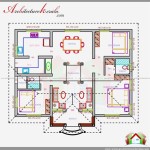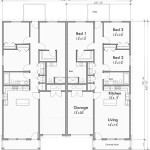House Building Plans: A Comprehensive Guide
Building a house is a significant undertaking, requiring careful planning and meticulous attention to detail. House building plans serve as the blueprint for your dream home, outlining the architectural design, structural elements, and functional spaces. These plans are essential for ensuring a successful construction project, from securing permits to guiding the work of contractors. This comprehensive guide delves into the world of house building plans, exploring their significance, key components, and the process of creating and utilizing them.
Understanding the Importance of House Building Plans
House building plans are more than just drawings on paper; they serve as a vital communication tool that brings your vision to life. They provide a clear and detailed roadmap for the entire construction process, guiding every step from foundation to finishing touches. Here are some of the key benefits of having well-developed house building plans:
- Clear Communication: Plans serve as a common language between you, architects, engineers, contractors, and subcontractors, ensuring everyone is on the same page.
- Accurate Cost Estimation: Detailed plans enable accurate material estimates, preventing budget overruns and ensuring financial stability throughout the project.
- Efficient Construction: Plans streamline the construction process, minimizing delays and maximizing efficiency by providing a roadmap for each stage of construction.
- Structural Integrity: Architectural and engineering plans ensure the structural soundness of the house, meeting local building codes and safety regulations.
- Aesthetic Vision: Plans allow you to visualize the final product, ensuring the house meets your desired style, layout, and functionality.
Key Components of House Building Plans
House building plans are typically composed of a set of drawings and specifications that cover various aspects of the construction project. These components work in synergy to provide a comprehensive blueprint for the entire building process. Here are some of the key components of a typical house building plan set:
- Site Plan: This drawing shows the location of the house on the property, including the dimensions, landscaping, and driveway.
- Floor Plans: These plans depict the layout of each floor, showcasing rooms, walls, doors, windows, and furniture placement.
- Elevation Drawings: These plans show the exterior views of the house from different perspectives, highlighting the roofline, facade, and landscaping.
- Cross-Sections: These drawings provide a vertical slice through the house, illustrating the relationship between different floor levels and the roof structure.
- Foundation Plan: This plan outlines the design of the foundation, including details about the footings, walls, and supporting structures.
- Framing Plan: This plan shows the layout of the walls, beams, and other structural components of the house.
- Roof Plan: This plan details the design of the roof, including the pitch, type, and materials used.
- Electrical Plan: This plan outlines the location of electrical fixtures, outlets, and wiring systems.
- Plumbing Plan: This plan shows the layout of plumbing fixtures, pipes, and drainage systems.
- HVAC Plan: This plan details the design and installation of the heating, ventilation, and air conditioning systems.
- Specifications: These written documents provide detailed information about materials, finishes, construction techniques, and other aspects of the project.
Creating and Utilizing House Building Plans
The process of creating house building plans typically involves a collaboration between you, an architect, an engineer, and potentially other specialists. Here’s a breakdown of the typical workflow:
- Initial Consultation: You meet with the architect to discuss your vision, budget, and site constraints.
- Design Development: The architect prepares preliminary sketches and plans based on your input.
- Plan Review and Revisions: You review the plans and provide feedback, leading to revisions and refinements.
- Engineering Design: An engineer reviews the plans to ensure structural integrity and compliance with building codes.
- Plan Approval: The plans are submitted to the local building department for review and approval.
- Construction Phase: The approved plans serve as a guide for contractors during all stages of construction.
Once the plans are approved, they become a critical tool for the construction process. The contractor uses them to estimate materials, schedule work, and ensure that the house is built according to your specifications. They also serve as a guide for subcontractors, ensuring that all aspects of the construction are coordinated and executed properly.
House building plans are an essential investment for any home construction project. They provide clarity, efficiency, and peace of mind by ensuring that your vision is translated into a well-designed and structurally sound home. By understanding the key components and the process of creating and utilizing these plans, you can navigate the complexities of home construction with confidence and success.

House Plans How To Design Your Home Plan

Small House Design 2024001 Pinoy Eplans Floor Plans

House Plans How To Design Your Home Plan

Easy To Build Houses And Floor Plans Houseplans Blog Com

Floor Plans Types Symbols Examples

House Plans Home Floor Architecturalhouseplans Com

Where You Can Buy House Plans Live Home 3d

Easy To Build Houses And Floor Plans Houseplans Blog Com

Peach Tree House Plan Ranch Floor Designs

Floor Plans Learn How To Design And Plan








